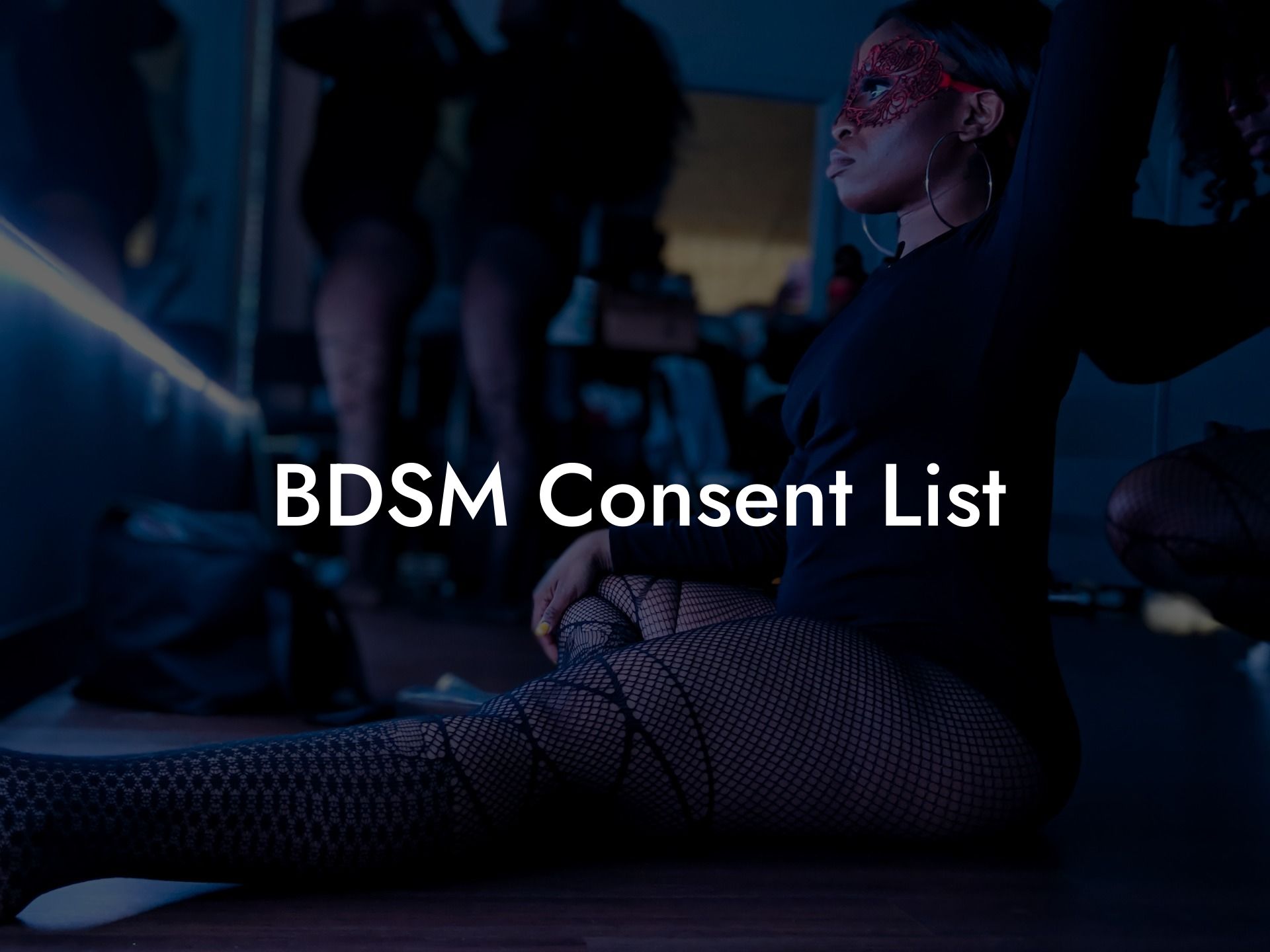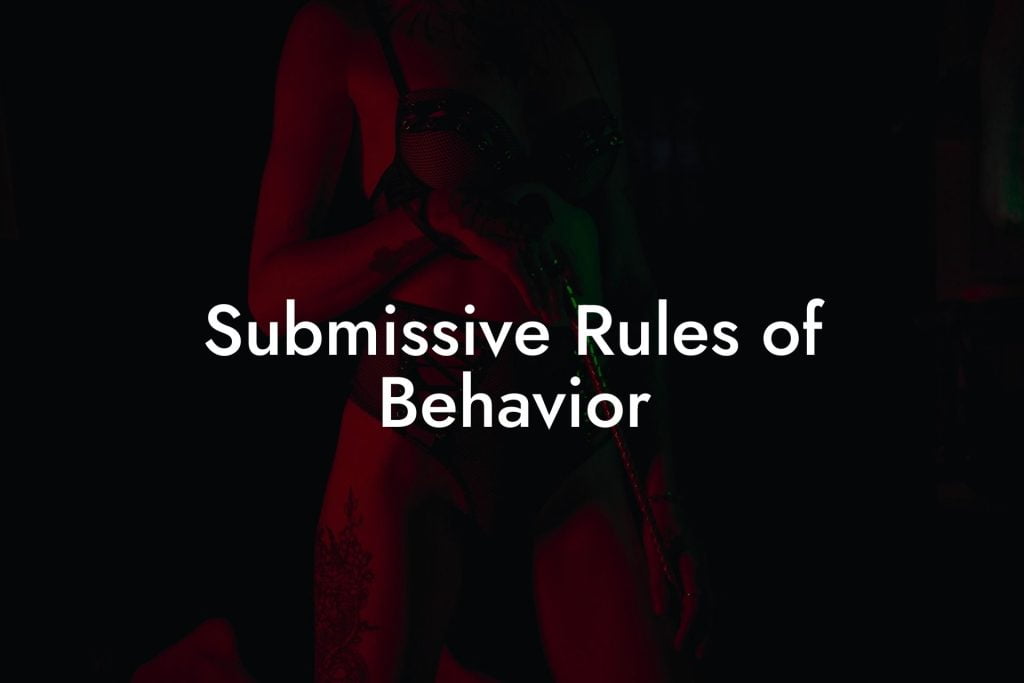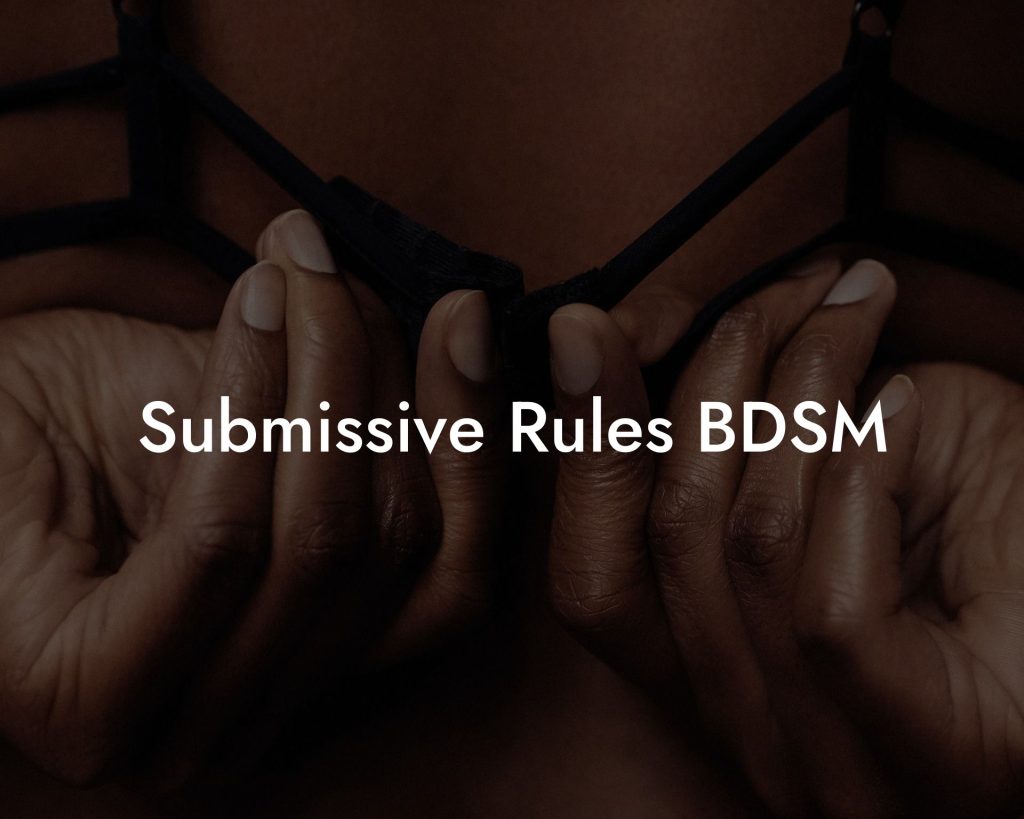Consent is the cornerstone of any healthy and fulfilling sexual relationship, but in the world of BDSM, where boundaries are often pushed and explorations go beyond the norm, it becomes even more essential. To ensure a safe and consensual experience for both partners, the use of a BDSM consent list is imperative. This comprehensive guide will walk you through the importance of a consent list, how to create one, and how to incorporate it into your BDSM dynamic.
In any BDSM relationship, consent is the cornerstone of trust and respect. It’s more than just saying “yes” or “no”—it’s about openly communicating your desires, limits, and expectations. But trust doesn’t end with a conversation—it’s built through ongoing, clear agreements. That’s where our Dominant & Submissive BDSM Contract Pack comes in. Find out more →
Creating a BDSM consent list can seem intimidating, especially if you are new to the lifestyle. However, it is crucial to establish clear boundaries, limits, and expectations before engaging in any BDSM activities. Here are the key steps to creating an effective consent list:
1. Open Communication
Start by having an open and honest conversation with your partner(s) about their desires, limits, and any triggers they may have. It is essential to establish trust and ensure everyone involved feels comfortable expressing their needs.
2. Identify Hard Limits
Hard limits are activities or actions that are strictly off-limits for an individual. These can include anything that makes someone feel uncomfortable, unsafe, or triggers a negative response. Examples of hard limits may include specific acts, implements, or even certain words.
3. Discuss Soft Limits
Soft limits are activities or actions that an individual may be unsure about or have reservations about but might be open to exploring under certain conditions or with more conversation. It is important to clearly define these limits to avoid any misunderstandings.
Looking for the best BDSM & Kink OnlyFans content creators? Here is a list of of our favourites that you will love:
-
- Best BDSM & Fetish OnlyFans - Molly✨ >> Link
- Best BBW & Huge Ass OnlyFans - Naughty Hanna Zimmer 💜🎀 >> Link
- Best Sexy Gaming Nerd OnlyFans - 🎮 Gracy EstuSWEET 🎮 >> Link
- Best Fetish & Kink Messaging OnlyFans - 💫Lola La Fleur 💫 >> Link
- Best Girl Next Door OnlyFans - ☀️Lily ⛅ >> Link
- Best Tiny European OnlyFans - 💝 Ami Allison 💝 >> Link
- Best Cosplay OnlyFans - 🐱 Little Kitty Kate 👉👌 >> Link
- Best Little OnlyFans - 🧸 Katya 🙇♀️ Sun >> Link
- Best Sub OnlyFans - 🍌Hanna Banana🍌 >> Link
- Best Teen & Huge Tits OnlyFans - ❣️Anny❣️19 y.o. BUSTY student girl >> Link
- Best Tiny Tits OnlyFans - ⍣⭐️ Sofia Parker ⭐️⍣ >> Link
- Best Sub & Huge Boobs OnlyFans - Nika Huge Boobs >> Link
- Best Kink OnlyFans - Sofia💖 >> Link
- Best Fetish & Girl Next Door OnlyFans - Hillary is Wet 💦 >> Link
- Best Dirty Latina OnlyFans - Paula Flores 😈 >> Link
Not quite what you are looking for? View the full list →
4. Negotiate and Set Boundaries
In this section, outline the activities, roles, and dynamics that both partners are interested in exploring. This can range from mild to intense scenarios, but it is crucial to ensure that all parties involved are enthusiastic and consenting.
5. Establish Safe Words
Safe words are a vital communication tool used to maintain boundaries during BDSM play. Choose a safe word or phrase that is easy to remember and clear in meaning. The use of safe words allows for immediate cessation of activities if any discomfort or safety concerns arise.
Frequently Asked Questions
What is a BDSM contract?
A BDSM contract is a document that outlines the terms and agreements between participants engaging in BDSM activities. It includes details such as boundaries, safewords, limits, roles, and expectations to ensure that all parties have a mutual understanding of the play involved. The contract is designed to promote clear communication and consent.
Are BDSM contracts legally binding?
No, BDSM contracts are not legally binding in most jurisdictions. They serve as a personal agreement between the parties involved to establish trust and outline the dynamics of their relationship. However, they can be a useful tool for clarifying the terms of a relationship.
Is consent always necessary in BDSM?
Yes, consent is a critical component of all BDSM activities. All parties must clearly communicate and agree to what will and won't take place. Consent must be informed, voluntary, and revocable at any time.
How do you negotiate a BDSM scene?
Negotiation for a BDSM scene involves open and honest communication about desires, expectations, boundaries, safewords, and any potential risks. This process should happen before any activity takes place and be revisited as needed to ensure the safety and comfort of all participants.
What is a safeword?
A safeword is a predetermined word or signal that participants in BDSM activities use to communicate an immediate need to slow down, adjust, or stop the activity. Safewords are essential for ensuring the safety and well-being of all parties involved.
Can a submissive revoke consent during a BDSM scene?
Absolutely. A submissive (or any participant) has the right to revoke consent at any point during a BDSM scene. The use of safewords or prearranged signals helps facilitate this. All activities should cease immediately if consent is withdrawn.
How is trust built in a BDSM relationship?
Trust in a BDSM relationship is built through consistent, open communication, respect for boundaries, and a strong emphasis on mutual care and responsibility. Trust is also reinforced by honoring agreements made in the BDSM contract and respecting safewords.
What happens if a safeword is ignored?
If a safeword is ignored, it constitutes a breach of trust and can be considered abuse. Ignoring a safeword goes against the principles of safe, sane, and consensual (SSC) or risk-aware consensual kink (RACK) and breaks the basic tenets of BDSM play.
What does 'aftercare' mean in BDSM?
Aftercare refers to the practice of attending to one another's physical, emotional, and psychological needs after a BDSM scene. It can involve actions like cuddling, debriefing the session, treating any minor injuries, and providing reassurance and comfort.
How important is communication in BDSM relationships?
Communication is fundamental in BDSM relationships. It ensures all parties understand each other's limits, desires, and expectations. Good communication is essential for maintaining safety, consent, and the overall well-being of everyone involved.
Are there different types of power dynamics in BDSM?
Yes, there are various types of power dynamics in BDSM, including Dominant/submissive, Master/slave, Owner/pet, and many others. These dynamics can vary greatly in intensity and formality, and are based on the consensual exchange of power and control.
What does RACK stand for?
RACK stands for Risk-Aware Consensual Kink. It is a principle that acknowledges that BDSM activities can involve certain risks and emphasizes the importance of being informed and consensual about these risks before engaging in play.
How can someone safely explore BDSM?
To safely explore BDSM, start by educating yourself on the practices and dynamics involved. Engage in open communication with your partner(s), establish clear boundaries and safewords, and approach activities with a focus on safety and consent. Consider attending workshops or seeking out communities that can provide guidance and support.
Is it necessary to have a safe word in all BDSM activities?
While not all BDSM activities might seem to require a safeword, having one is a best practice for ensuring safety. It provides a clear means to communicate during intense scenes or situations where verbal communication might otherwise be unclear.
Can BDSM activities be therapeutic?
For some individuals, BDSM activities can be therapeutic as they provide a means of exploring personal limits, relieving stress, or escaping from daily routines. However, BDSM should not replace professional therapy if an individual is dealing with significant mental health issues.
Should I tell my partner about my BDSM interests?
Sharing your BDSM interests with your partner is important for maintaining an honest and fulfilling relationship. Communicating your desires and exploring new dynamics together can enhance trust and intimacy.
What should I do if my boundaries are crossed during a BDSM activity?
If your boundaries are crossed, it's important to communicate this to your partner as soon as possible. Utilize your safeword if necessary, terminate the session, and discuss what happened when both parties are calm. It may be beneficial to reevaluate the terms of the BDSM contract or relationship if needed.
How can one withdraw from a BDSM relationship if it becomes uncomfortable?
If a BDSM relationship becomes uncomfortable, communicate your feelings to your partner clearly and respectfully. If the decision is to withdraw, be firm in your decision and seek support from friends, loved ones, or the BDSM community if needed. Prioritize your safety and well-being.
Is it normal to feel nervous before trying BDSM?
Feeling nervous before trying BDSM is perfectly normal, as it can be a big step towards exploring new aspects of your sexuality and relationships. Take things slowly, ensure you feel safe, and remember that consent and communication are key.
How do I know if BDSM is right for me?
Knowing if BDSM is right for you involves introspection about your desires and boundaries, educating yourself on safe practices, and understanding the responsibility and communication it requires. Start with light activities and gauge your comfort level, always prioritizing your consent and well-being.
Can BDSM elements be incorporated into an existing non-BDSM relationship?
Yes, BDSM elements can be incorporated into an existing non-BDSM relationship with clear communication and consent from all involved parties. Start with open discussions about interests and boundaries, and continuously check in to ensure a comfortable and enjoyable experience for everyone.
Incorporating a BDSM consent list is crucial to creating a safe and consensual environment for all parties involved. By openly discussing boundaries, limits, and desires, you can build trust and explore the exciting world of BDSM with confidence. Discover more essential guides like this, explore our fetish shop, and order our Ultimate BDSM Contract Pack on Filthy Adult. Don't forget to share this article with others who may benefit from learning about consent in BDSM.













